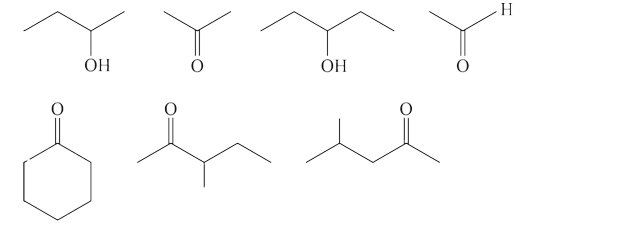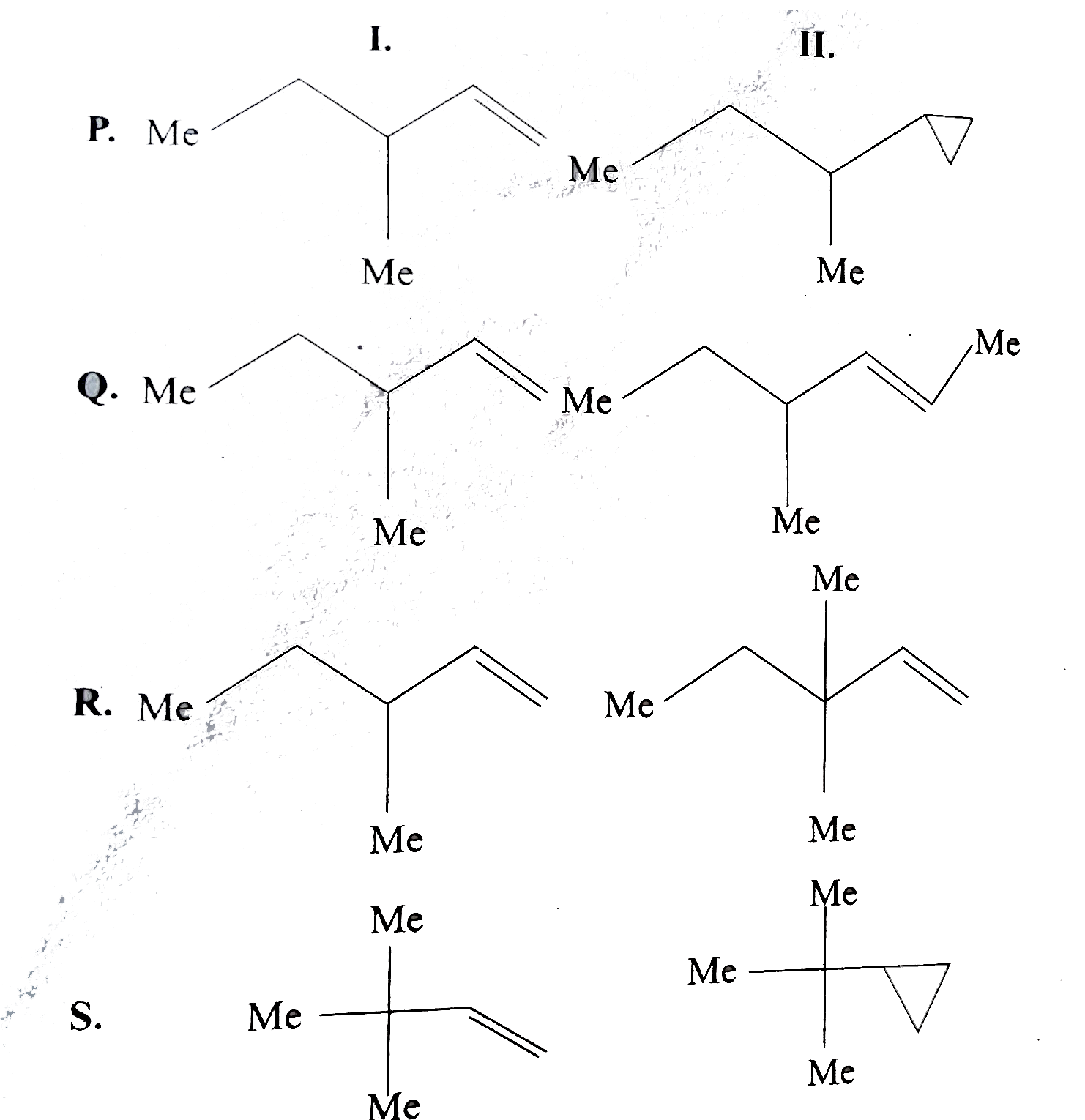An optically active compound
2-chlororpropanal
2-chloropentane
2-chlorobutane
2-chloro-2-methylbutane
Step by step video & image solution for An optically active compound by Chemistry experts to help you in doubts & scoring excellent marks in Class 12 exams.
Updated on:21/07/2023Topper's Solved these Questions
- INTRODUCTION TO ORGANIC CHEMISTRY BOOK - VMC MODULES ENGLISHCHAPTER - INTRODUCTION TO ORGANIC CHEMISTRY EXERCISE - JEE ADVANCED ARCHIVE
81 Videos
- INTRODUCTION TO ORGANIC CHEMISTRY BOOK - VMC MODULES ENGLISHCHAPTER - INTRODUCTION TO ORGANIC CHEMISTRY EXERCISE - LEVEL 2 (Numerical value type )
15 Videos
- ICONIC EQUILIBRIUMBOOK - VMC MODULES ENGLISHCHAPTER - ICONIC EQUILIBRIUMEXERCISE - IMPECCABLE
50 Videos
- IONIC EQUILIBRIUMBOOK - VMC MODULES ENGLISHCHAPTER - IONIC EQUILIBRIUMEXERCISE - IN - CHAPTER EXERCISE - K
10 Videos
Similar Questions
An optically activ compound (A) has the molecular formula C6H10. The compound gives a ppt. When treated with Ag(NH3)2OH. On catalytic hydrogenation, A yields B(C6H14) which is only optically inactive identify the total number of αH in product formed by treatment of A with O3/H2O2 then LAH and then H⊕/Δ
View SolutionIdentify the optically active compounds from the following
View Solution
Knowledge Check
If (±) 2-methyl butanoic acid were esterified by reaction with (±) 2-butanol, how many optically active compounds would be present in the final equilibrium reaction mixture?
A2B3C4D6An optically active ester 'F' have molecular weight 186. Hydrolysis of 'F' gives two optically active compounds ‘G' and 'H'. 'G' which is soluble in NaOH and 'H'. 'H' gives a positive iodoform test and on warming with conc. H2SO4 gives 'I' with no diastereomers. When Ag salt of 'G' reacted with Br2 , racemic mixture 'J' is formed. Optically active 'J ' is formed when 'H' is treated with TsCl and then with NaBr.
Find out structure of F :A B
B C
C D
D
An optically active ester 'F' have molecular weight 186. Hydrolysis of 'F' gives two optically active compounds ‘G' and 'H'. 'G' which is soluble in NaOH and 'H'. 'H' gives a positive iodoform test and on warming with conc. H2SO4 gives 'I' with no diastereomers. When Ag salt of 'G' reacted with Br2 , racemic mixture 'J' is formed. Optically active 'J ' is formed when 'H' is treated with TsCl and then with NaBr.
Find out correct structure of I :A B
B C
C D
D
Number of optically active compounds out of following that can give Haloform reactions.

View SolutionThe number of optically active compounds in the isomers of C4H9Br is
View SolutionThe stereochemical formula of diastereomer 'Y' of optically active compound 'X' is,
( If X=2,3− Dihydroxybutanedioic acid. ).
View SolutionWrite the name and structrue of the following optically active compounds with lowest moleuclar weight.
i. alkane ii. Alkene
iii. Alkyne iv. unsaturated hydrocabon
v. alkyl halide vi. Alcohol
vii. Acid viii. Amine.
View SolutionCarbene intermediates are produced by the photolysis of diazomethane (CH2N2) or kenene (CH2=C=O). They are also produced by the reaction of CHX3 with base or by Simmons-Smith reaction. There are two types of carbenes, singlet and triplet. They are so called due to their spin state.
An optically active alkene (I) with lowest molecular mass on hydrogenation gives optically inactive alkene, but on insertion of methylene carbene (:CH2) in (I), it gives optically active compound (II). The compounds (I) and (II) are :
 .
.
View Solution